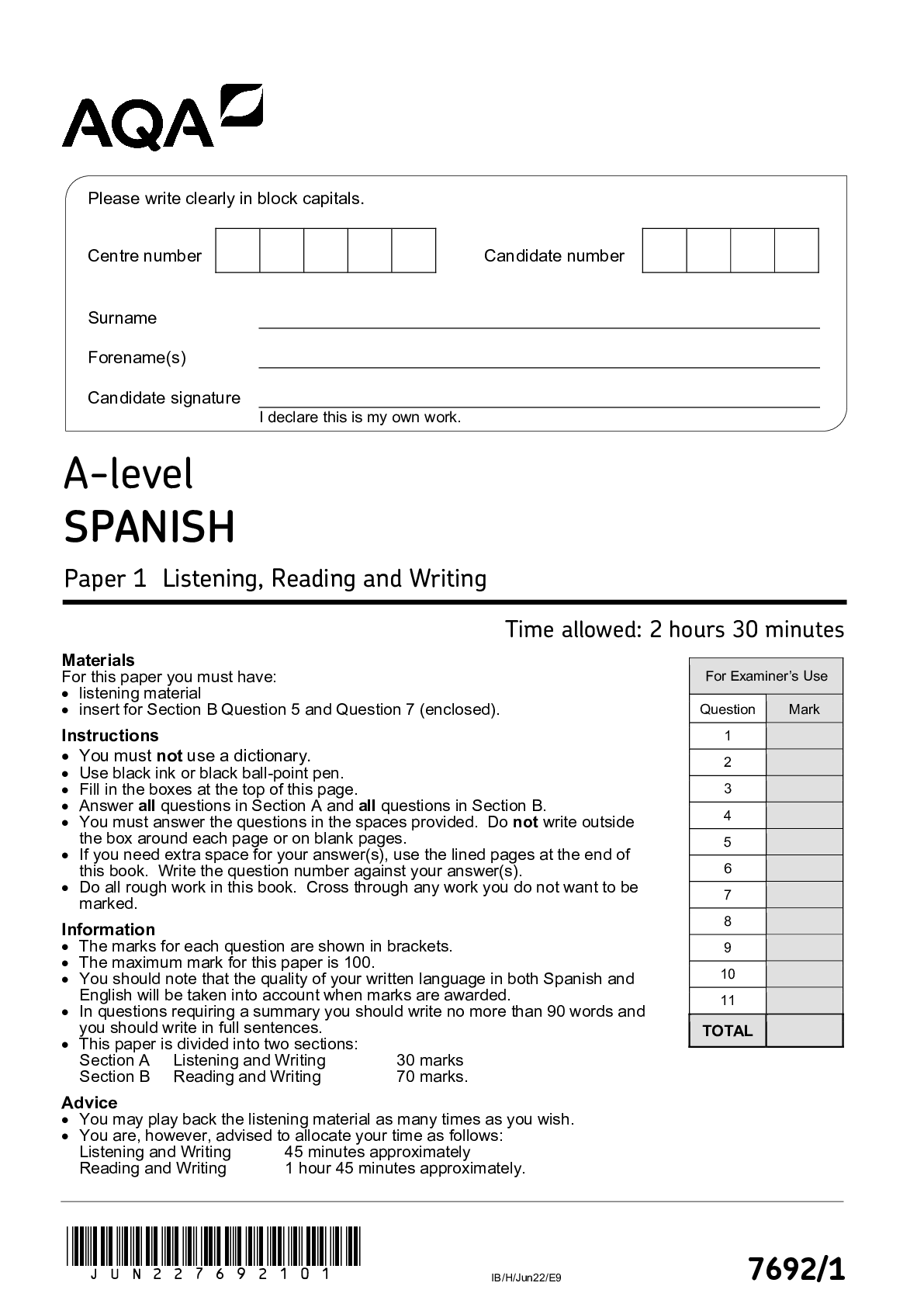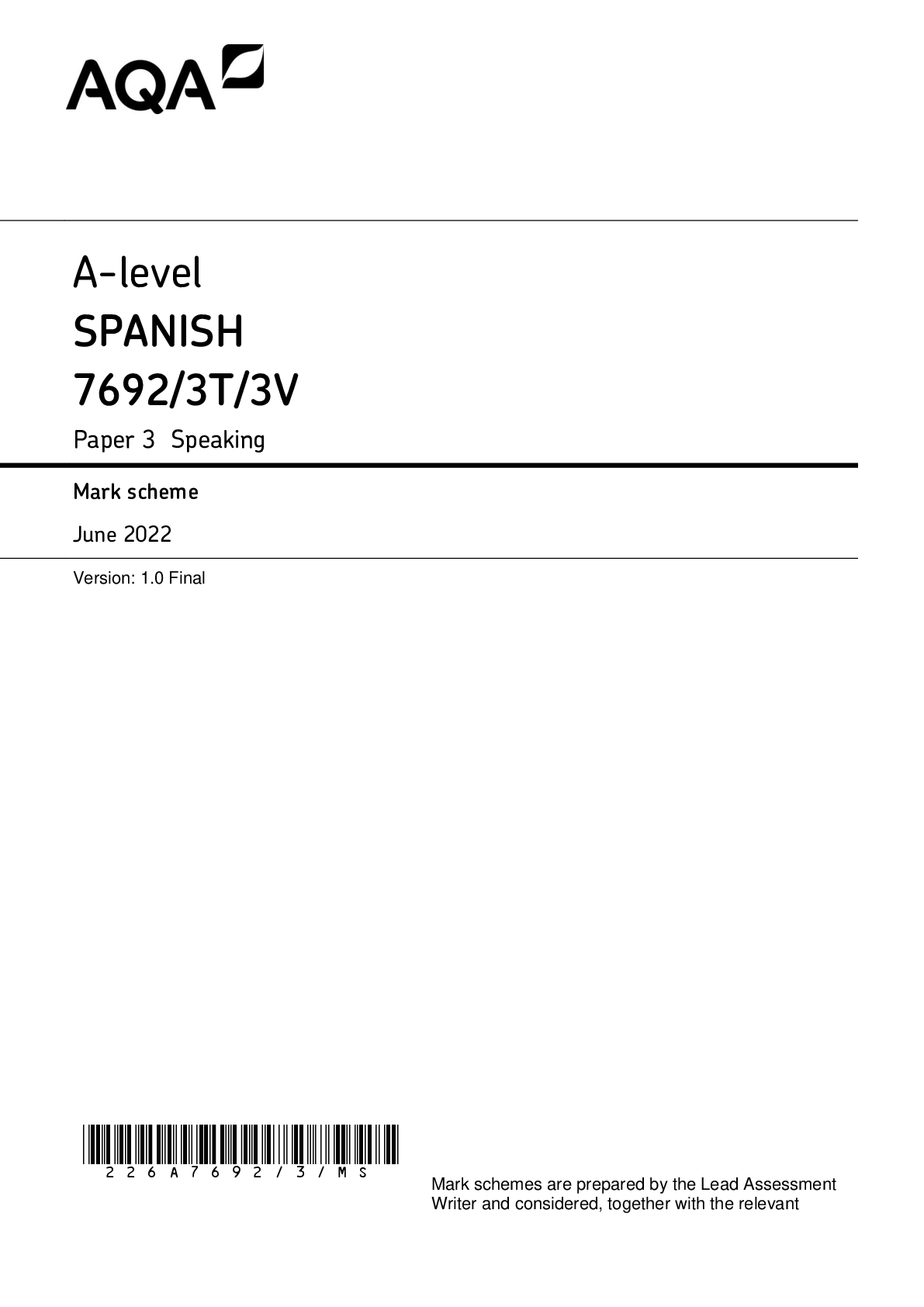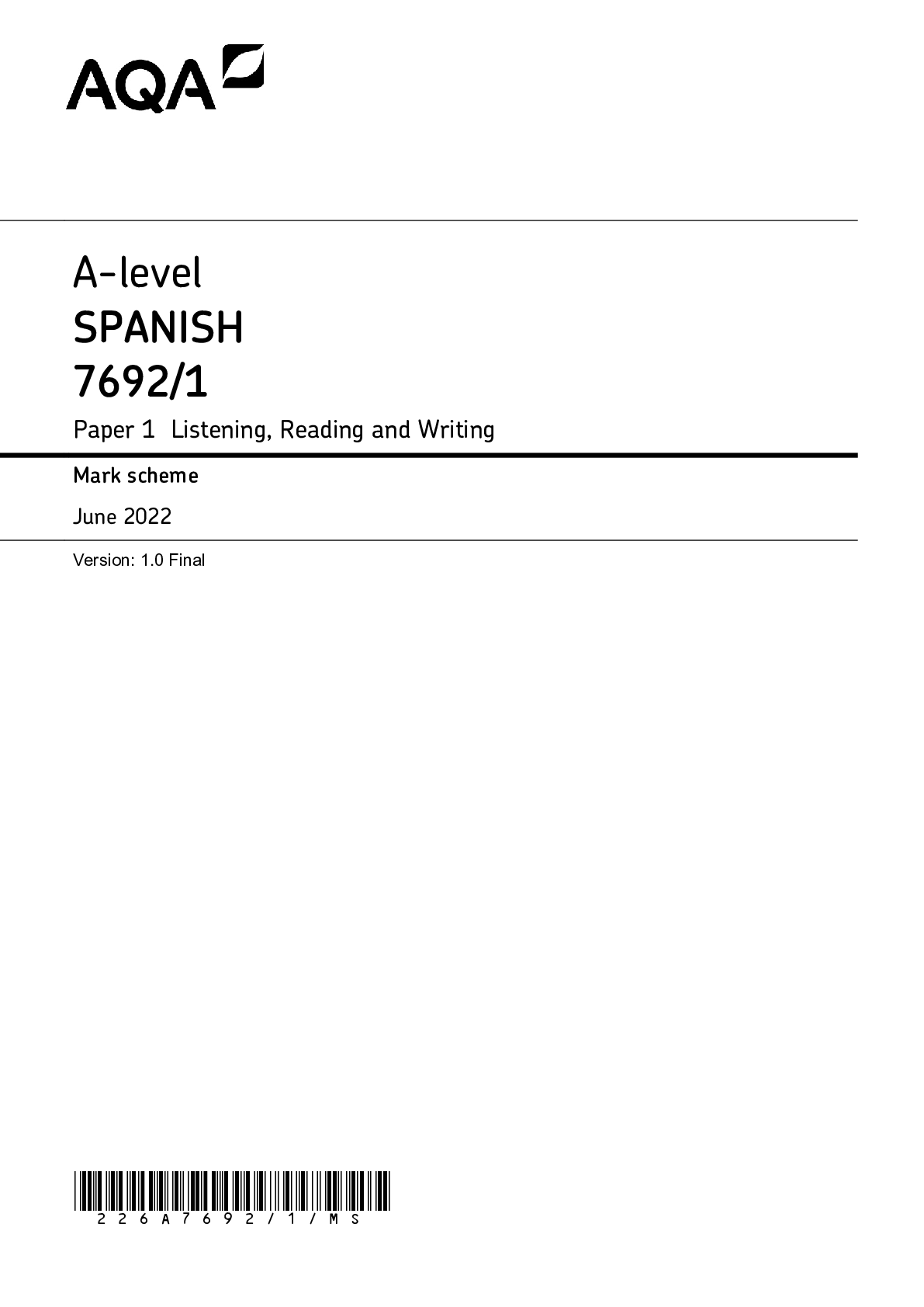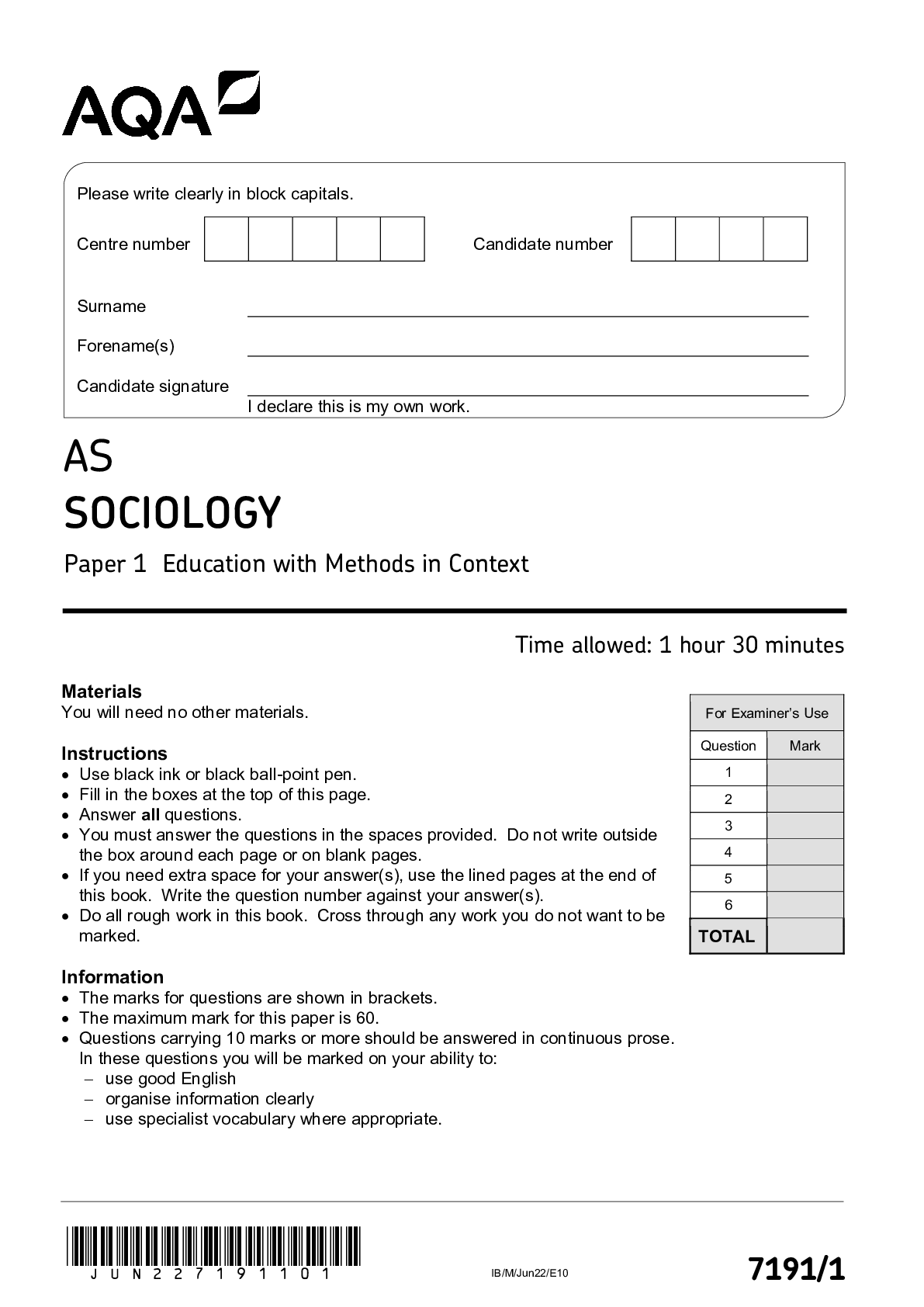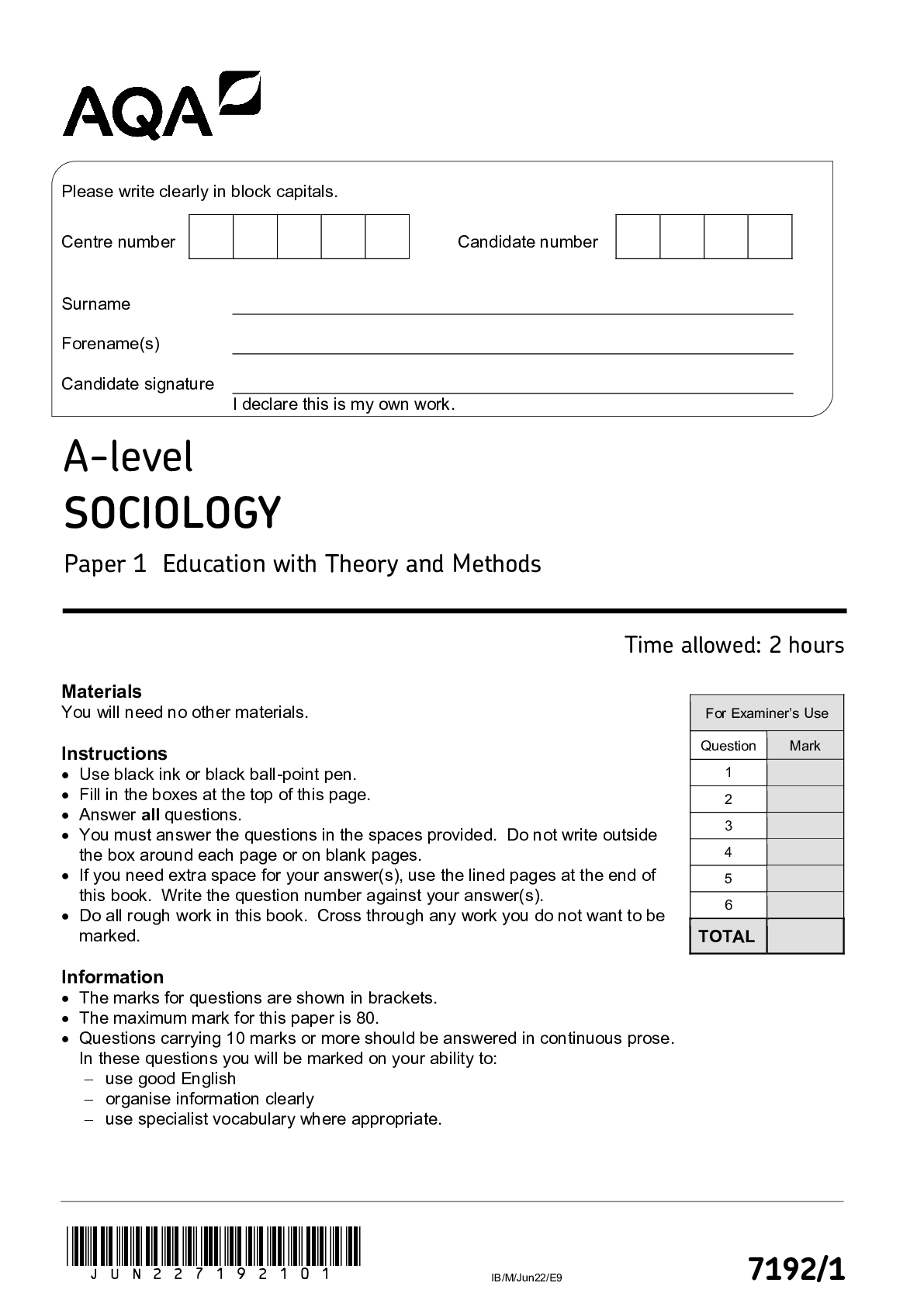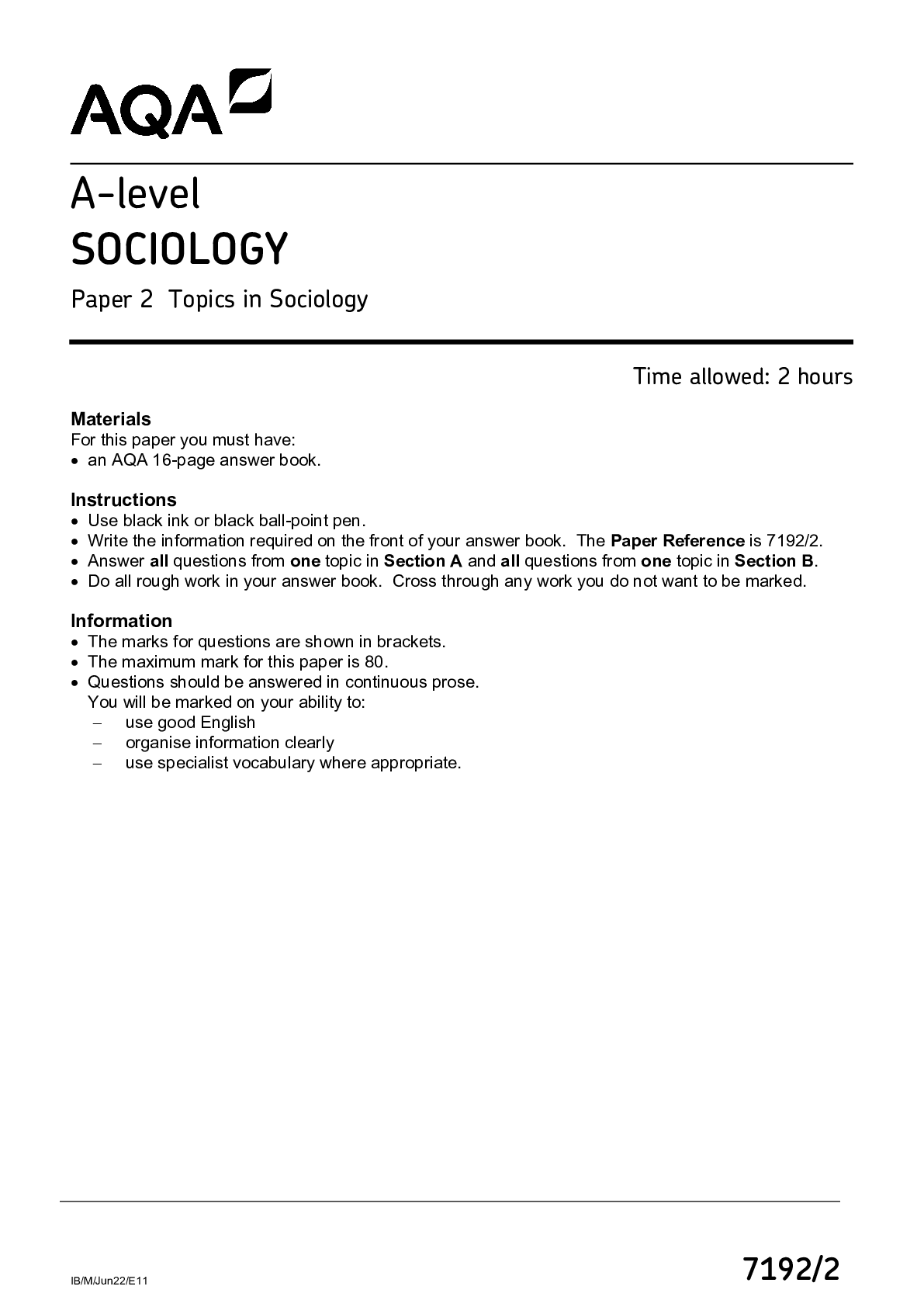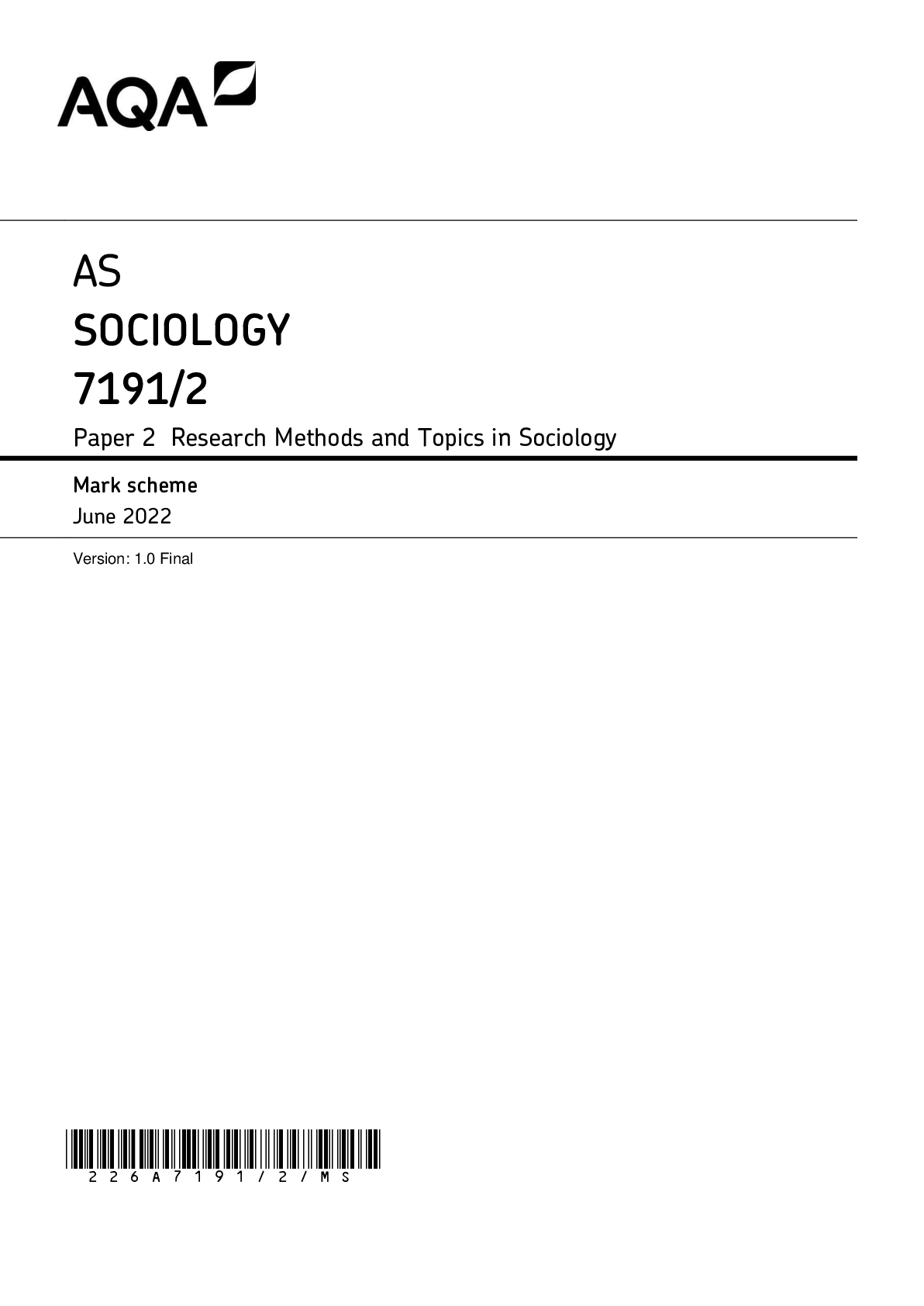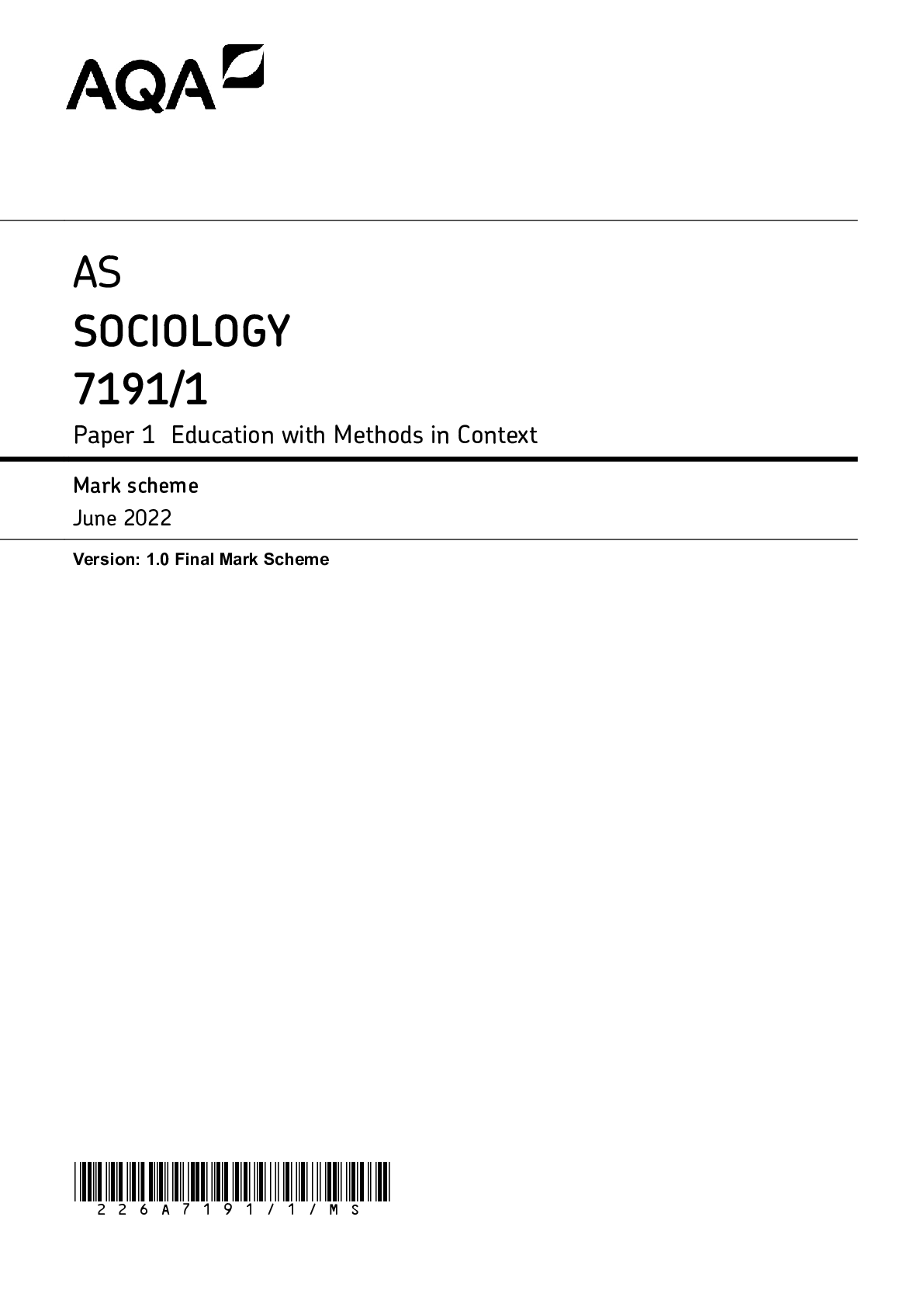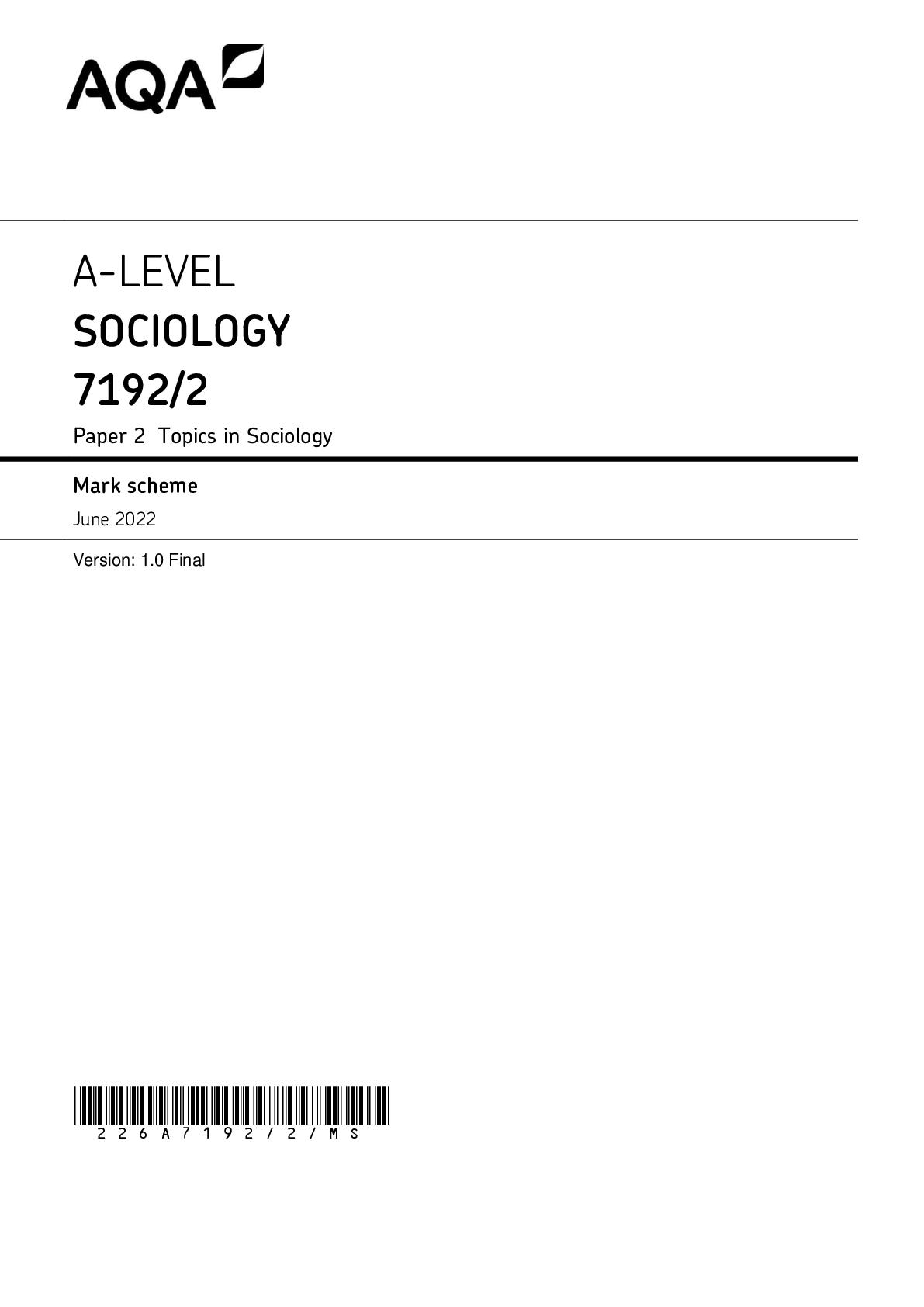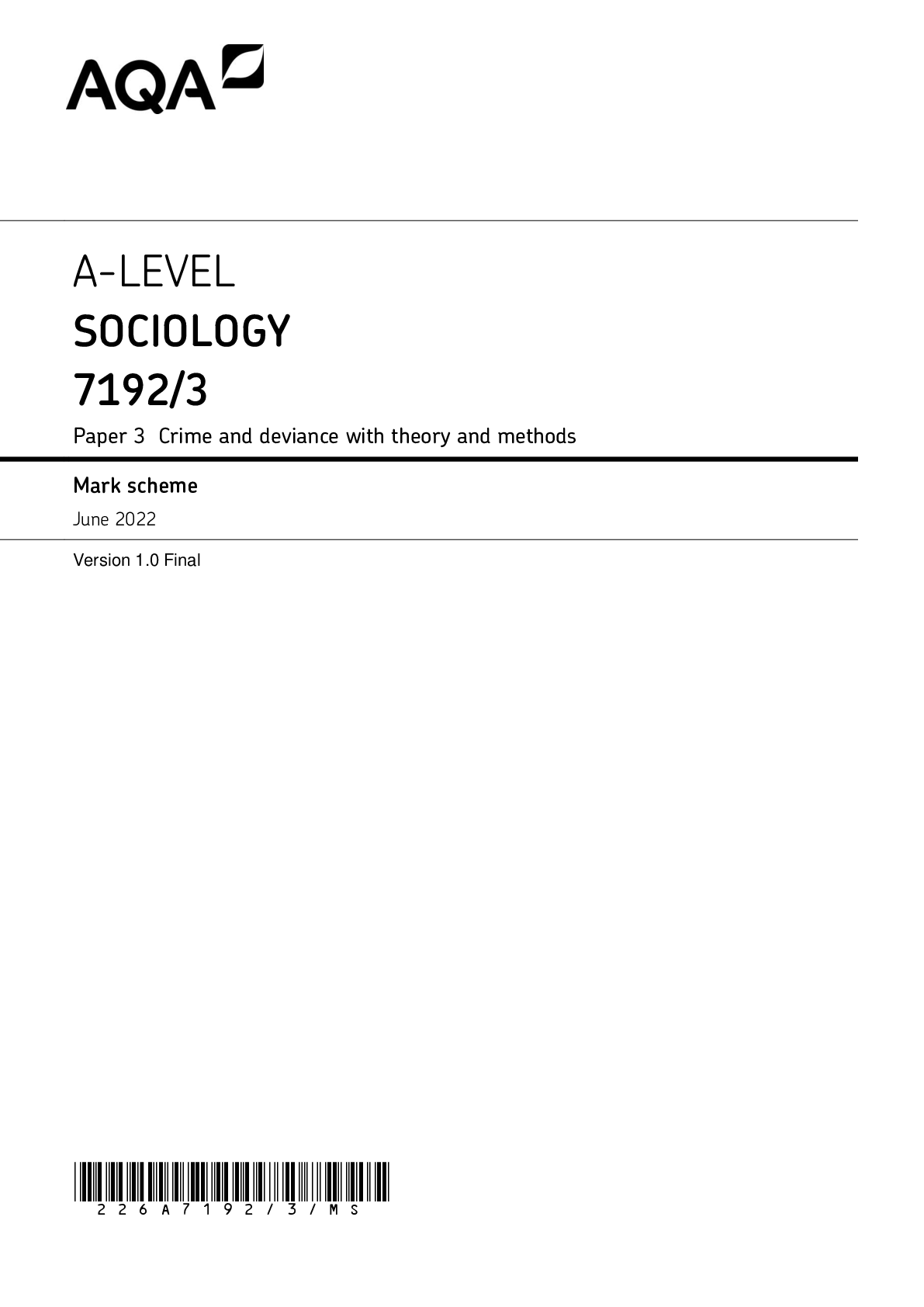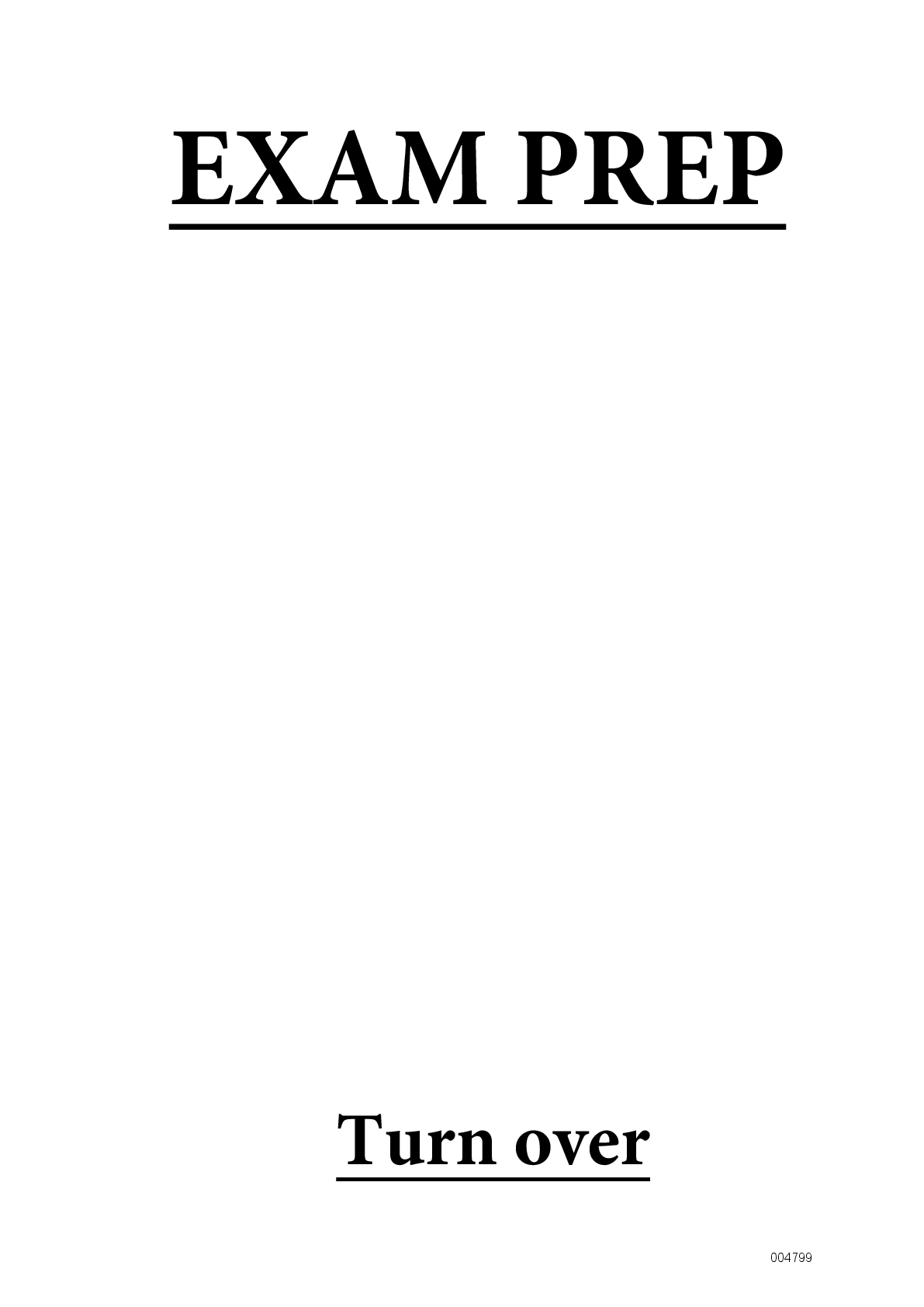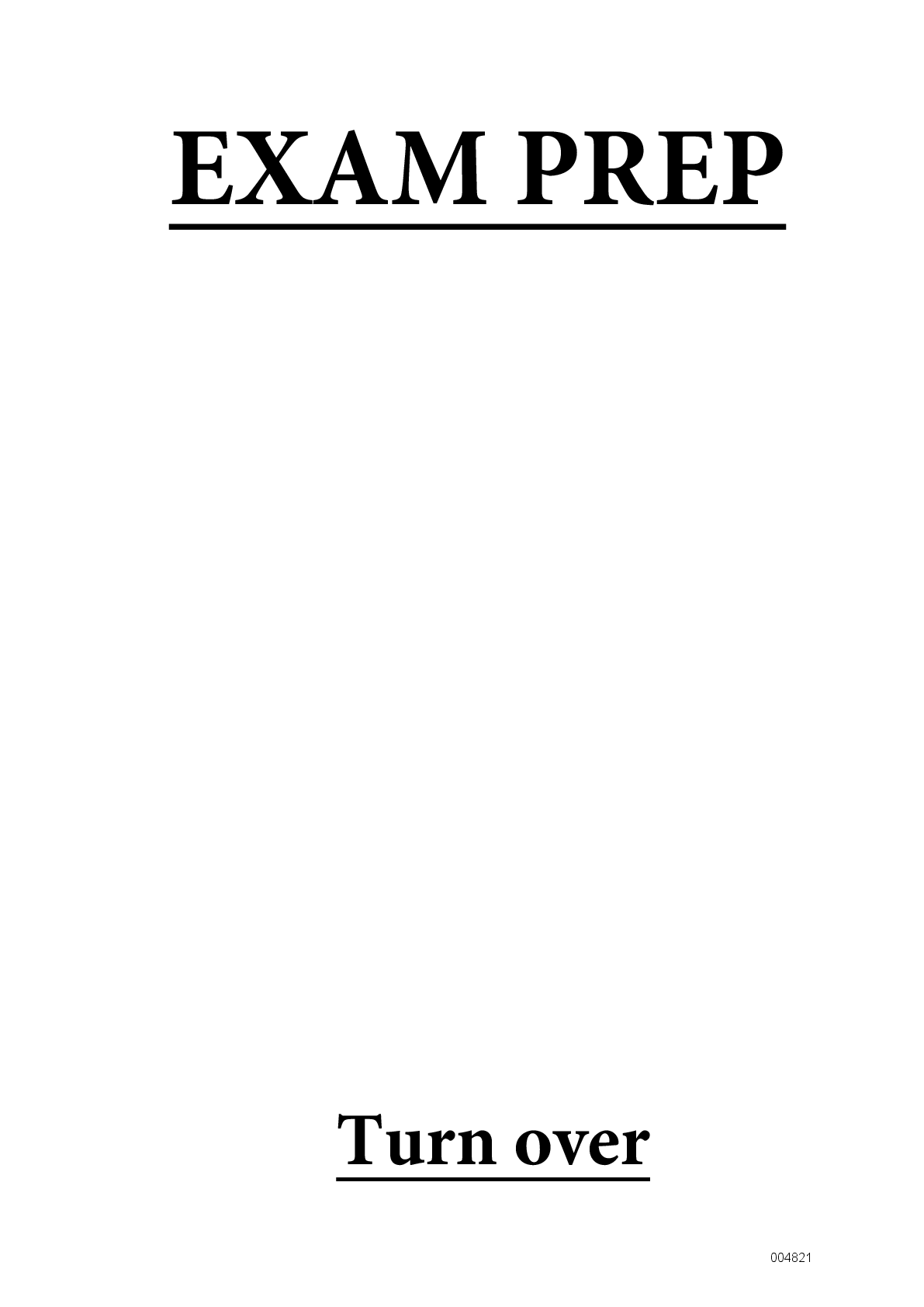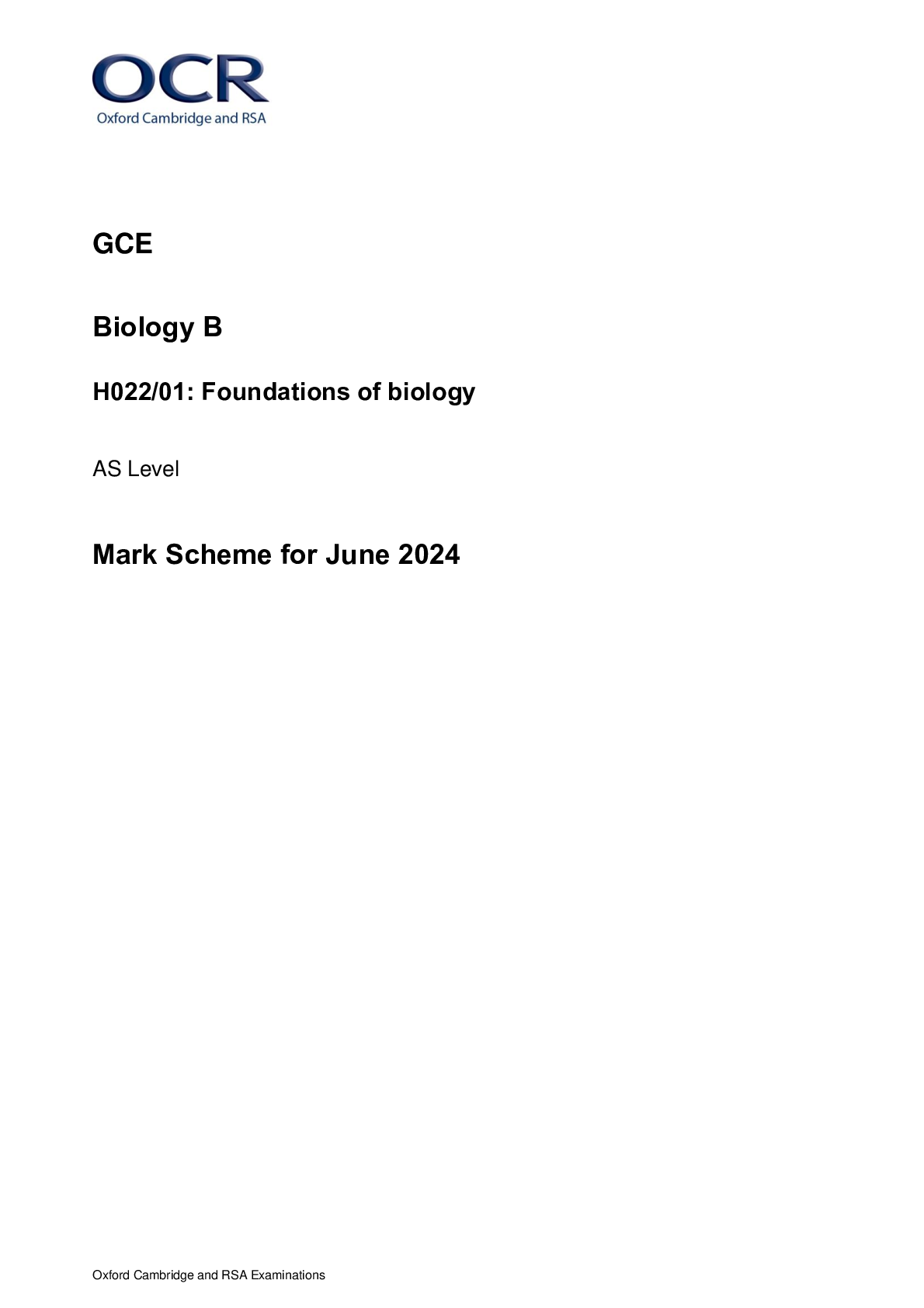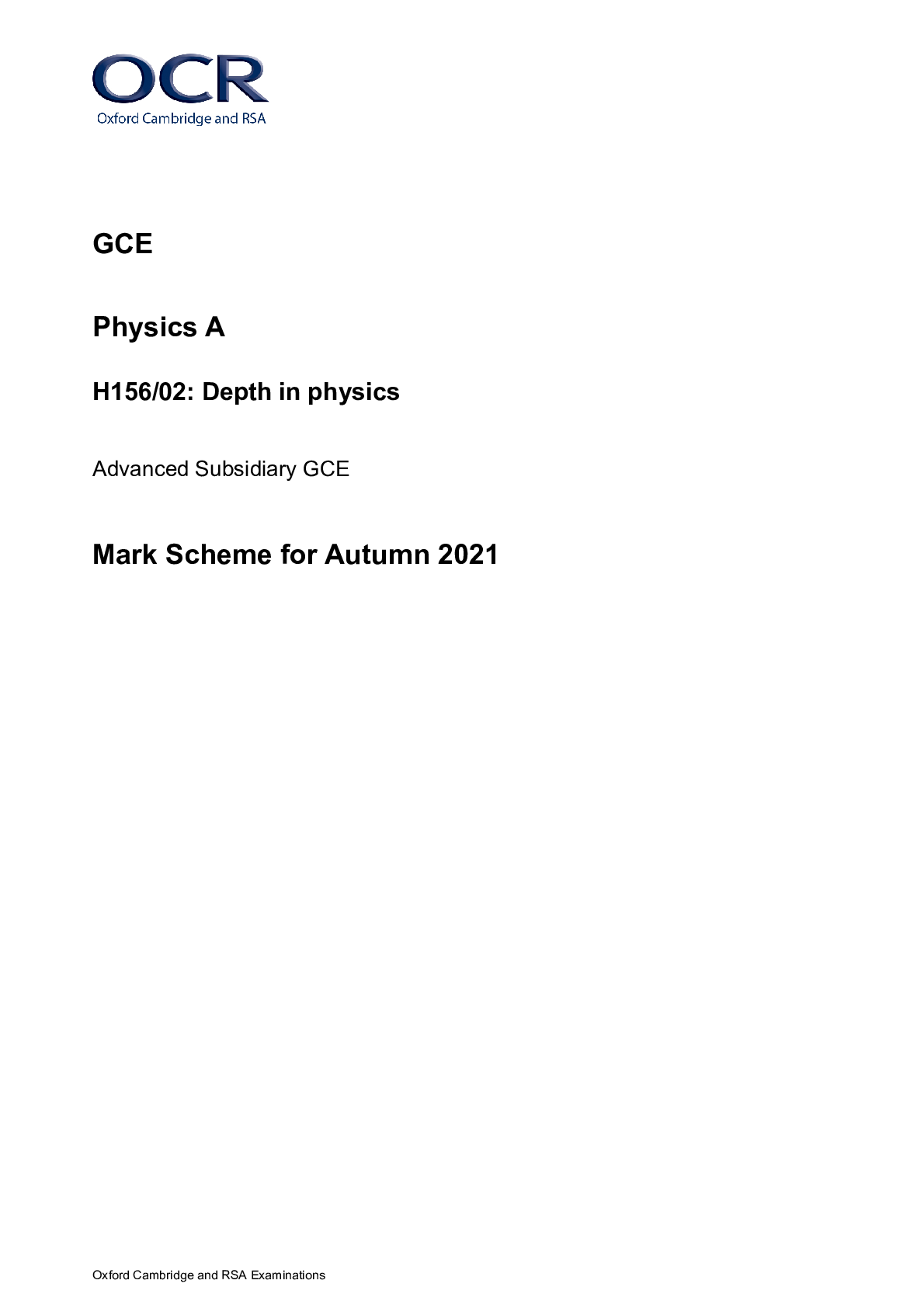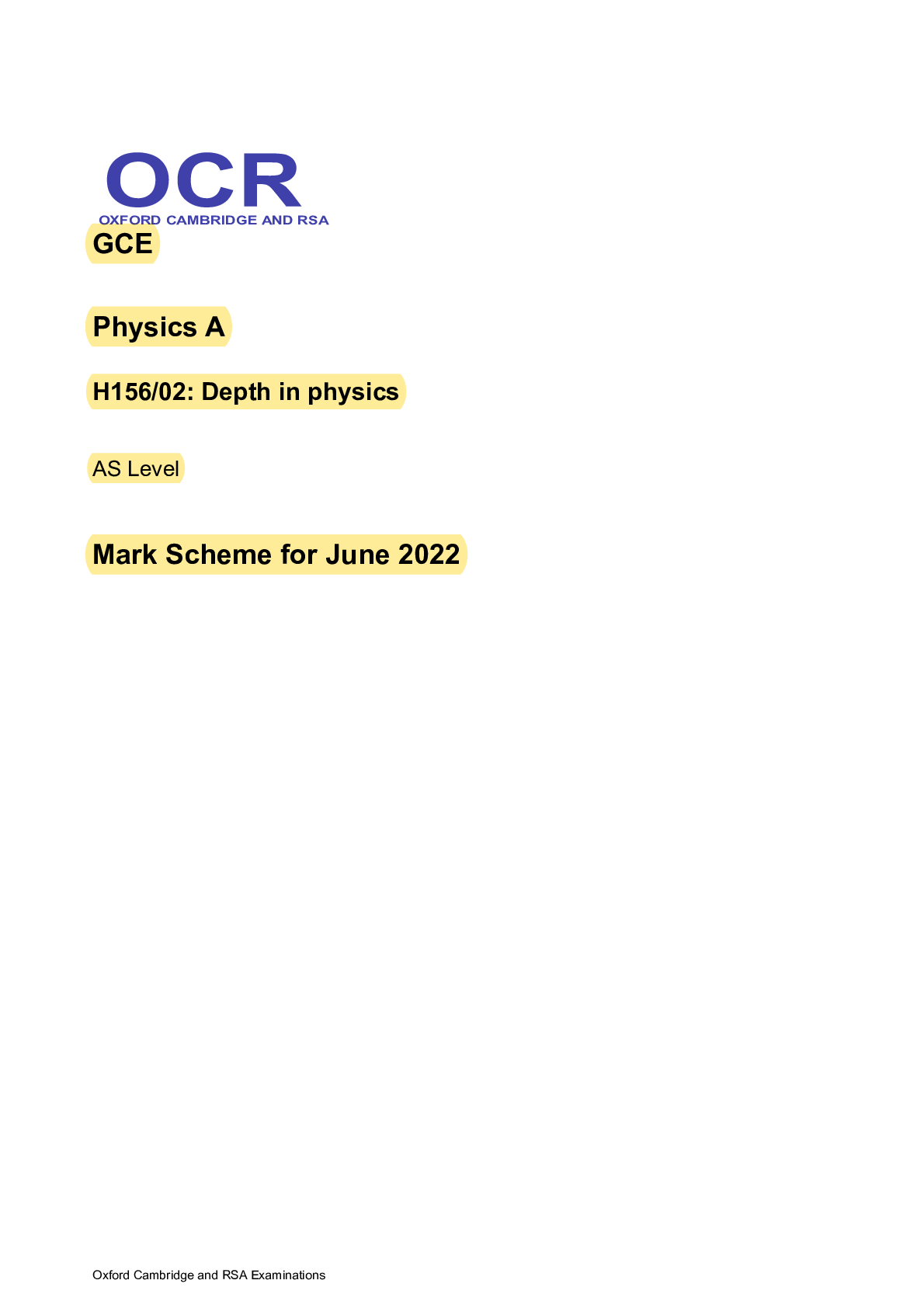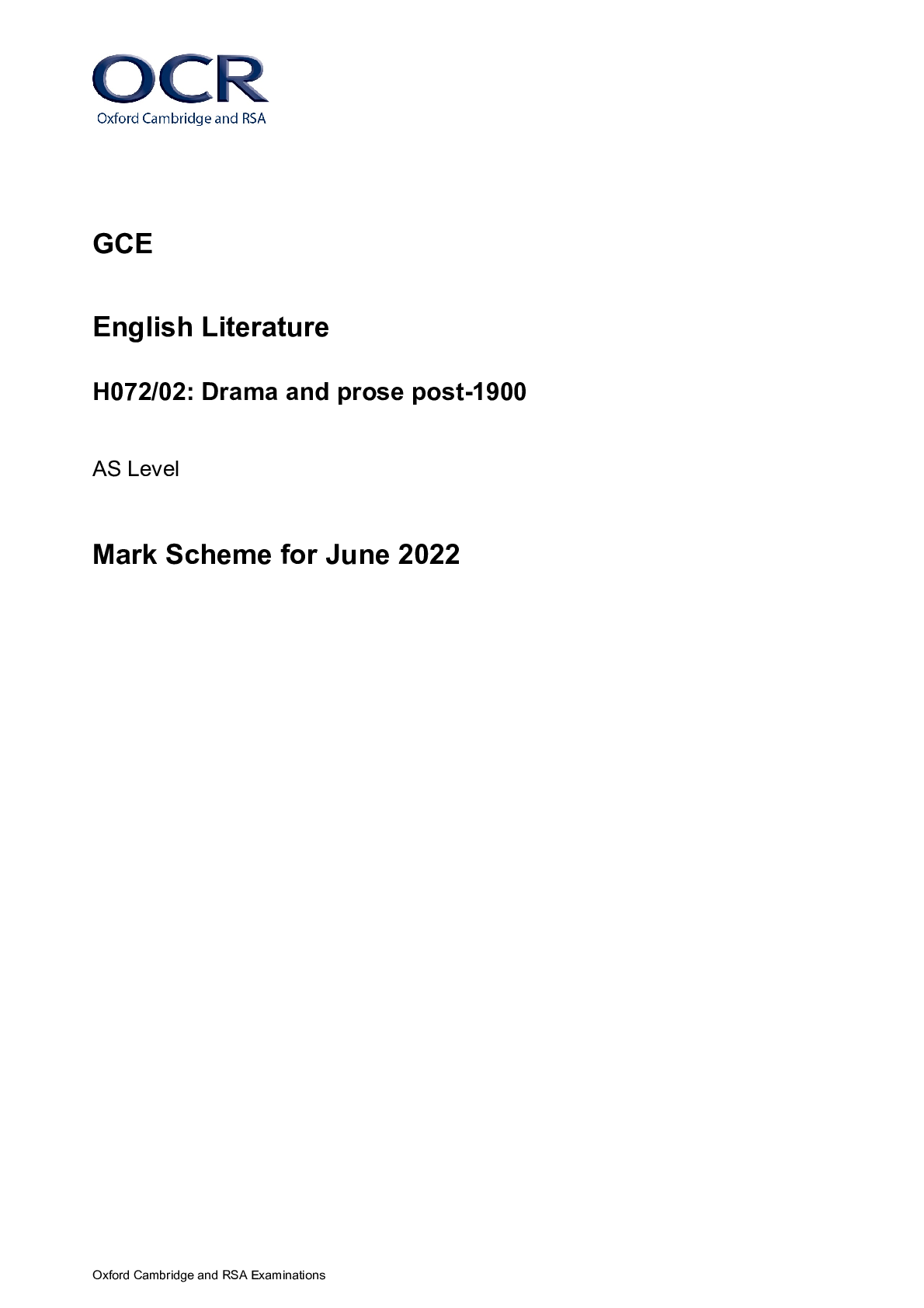Psychology > AS Level Mark Scheme > AS PSYCHOLOGY 7181/2 Paper 2 Psychology in context Mark scheme June 2022 Version 1.0 Final Mark Sche (All)
AS PSYCHOLOGY 7181/2 Paper 2 Psychology in context Mark scheme June 2022 Version 1.0 Final Mark Schem
Document Content and Description Below
AS PSYCHOLOGY 7181/2 Paper 2 Psychology in context Mark scheme June 2022 Version 1.0 Final Mark Scheme *226A7181/2/MS* MARK SCHEME – AS PSYCHOLOGY – 7181/2 – JUNE 2022 2 Mark schemes a ... re prepared by the Lead Assessment Writer and considered, together with the relevant questions, by a panel of subject teachers. This mark scheme includes any amendments made at the standardisation events which all associates participate in and is the scheme which was used by them in this examination. The standardisation process ensures that the mark scheme covers the students’ responses to questions and that every associate understands and applies it in the same correct way. As preparation for standardisation each associate analyses a number of students’ scripts. Alternative answers not already covered by the mark scheme are discussed and legislated for. If, after the standardisation process, associates encounter unusual answers which have not been raised they are required to refer these to the Lead Examiner. It must be stressed that a mark scheme is a working document, in many cases further developed and expanded on the basis of students’ reactions to a particular paper. Assumptions about future mark schemes on the basis of one year’s document should be avoided; whilst the guiding principles of assessment remain constant, details will change, depending on the content of a particular examination paper. Further copies of this mark scheme are available from aqa.org.uk Copyright information AQA retains the copyright on all its publications. However, registered schools/colleges for AQA are permitted to copy material from this booklet for their own internal use, with the following important exception: AQA cannot give permission to schools/colleges to photocopy any material that is acknowledged to a third party even for internal use within the centre. Copyright © 2022 AQA and its licensors. All rights reserved. MARK SCHEME – AS PSYCHOLOGY – 7181/2 – JUNE 2022 3 Level of response marking instructions Level of response mark schemes are broken down into levels, each of which has a descriptor. The descriptor for the level shows the average performance for the level. There are marks in each level. Before you apply the mark scheme to a student’s answer read through the answer and annotate it (as instructed) to show the qualities that are being looked for. You can then apply the mark scheme. Step 1 Determine a level Start at the lowest level of the mark scheme and use it as a ladder to see whether the answer meets the descriptor for that level. The descriptor for the level indicates the different qualities that might be seen in the student’s answer for that level. If it meets the lowest level then go to the next one and decide if it meets this level, and so on, until you have a match between the level descriptor and the answer. With practice and familiarity you will find that for better answers you will be able to quickly skip through the lower levels of the mark scheme. When assigning a level you should look at the overall quality of the answer and not look to pick holes in small and specific parts of the answer where the student has not performed quite as well as the rest. If the answer covers different aspects of different levels of the mark scheme you should use a best fit approach for defining the level and then use the variability of the response to help decide the mark within the level, ie if the response is predominantly level 3 with a small amount of level 4 material it would be placed in level 3 but be awarded a mark near the top of the level because of the level 4 content. Step 2 Determine a mark Once you have assigned a level you need to decide on the mark. The descriptors on how to allocate marks can help with this. The exemplar materials used during standardisation will help. There will be an answer in the standardising materials which will correspond with each level of the mark scheme. This answer will have been awarded a mark by the Lead Examiner. You can compare the student’s answer with the example to determine if it’s the same standard, better or worse than the example. You can then use this to allocate a mark for the answer based on the Lead Examiner’s mark on the example. You may well need to read back through the answer as you apply the mark scheme to clarify points and assure yourself that the level and the mark are appropriate. Indicative content in the mark scheme is provided as a guide for examiners. It is not intended to be exhaustive and you must credit other valid points. Students do not have to cover all of the points mentioned in the Indicative content to reach the highest level of the mark scheme. An answer which contains nothing of relevance to the question must be awarded no marks. MARK SCHEME – AS PSYCHOLOGY – 7181/2 – JUNE 2022 4 Section A Approaches in Psychology 0 1 Explain the process of synaptic transmission. [4 marks] Marks for this question AO1 = 4 Level Marks Description 2 3–4 Explanation of the process of synaptic transmission is detailed, clear and mostly accurate with use of appropriate scientific terminology. 1 1–2 Explanation of the process of synaptic transmission is incomplete/muddled. Scientific terminology is either absent or inappropriately used. 0 No relevant content. Possible content: • electrical impulses (action potentials) reach the presynaptic terminal • electrical impulses (action potentials) trigger release of neurotransmitters (or named example) from synaptic vesicles • neurotransmitters diffuse across the synaptic cleft • neurotransmitters bind to receptors on the postsynaptic membrane. Credit other relevant material (eg; labelled diagram – direction of transmission should be made clear; excitation/inhibition). MARK SCHEME – AS PSYCHOLOGY – 7181/2 – JUNE 2022 5 0 2 Outline the role of adrenalin in the fight or flight response. Refer to Ian’s experiences in your answer. [6 marks] Marks for this question AO1 = 3, AO2 = 3 Level Mark Description 3 5–6 Knowledge of the role of adrenalin in the fight or flight response is clear and generally well detailed. Application to Ian’s experience is mostly clear and effective. The answer is generally coherent with appropriate use of terminology. 2 3–4 Knowledge of the role of adrenalin in the fight or flight response is evident. There is some effective application to Ian’s experience for 4 marks. The answer lacks clarity in places. Terminology is used appropriately on occasions. 1 1–2 Knowledge of the role of adrenalin in the fight or flight response is limited. Application to Ian’s experience is either absent or lacks focus on the role of adrenalin. The answer as a whole lacks clarity and has inaccuracies. Terminology is either absent or inappropriately used. 0 No relevant content. Possible content: • the fight or flight response occurs in a stressful situation and causes adrenalin to be released from the adrenal medulla (and triggers the sympathetic action) • direct effects of adrenalin: increases heart rate, constricts blood vessels; increasing rate of blood flow and raising blood pressure; increases blood to brain and skeletal muscle • general effects of adrenalin: preparing the body for action, fight or flight; increasing blood supply/oxygen, to skeletal muscle for physical action; increasing oxygen to brain for rapid response planning • as the stressful situation passes adrenalin levels return to normal and heart rate decreases (parasympathetic action). Possible application: • fear of hitting the branch triggered the flight or fight response • adrenalin caused Ian’s heart rate to increase • Ian’s mouth went dry because saliva production is inhibited • Ian’s muscles tensed allowing him to respond rapidly and slam on his brakes • when Ian realised that he was not going to hit the branch the fear passed, adrenalin levels fell and so did his heart rate. Note: Maximum of Level 1 if the response is not explicitly focused on the causal role of adrenalin in the fight or flight response. MARK SCHEME – AS PSYCHOLOGY – 7181/2 – JUNE 2022 6 0 3 Briefly outline how Pavlov investigated classical conditioning. [3 marks] Marks for this question AO1 = 3 3 marks for a clear and coherent outline of how Pavlov investigated classical conditioning using accurate terminology. 2 marks for an outline of how Pavlov investigated classical conditioning with some relevant detail or for a clear and coherent outline without accurate terminology 1 mark for a muddled or limited outline of how Pavlov investigated classical conditioning. Possible content: • detail of Pavlov’s classical conditioning experiments into salivation reflex in dogs • knowledge of Pavlovian concepts in the context of Pavlov’s experiments: unconditioned stimulus; conditioned stimulus; unconditioned response; conditioned response; learning by association; temporal association/contiguity. Credit other relevant description of how Pavlov investigated classical conditioning. MARK SCHEME – AS PSYCHOLOGY – 7181/2 – JUNE 2022 7 0 4 Using your knowledge of social learning theory, explain why Grace might be more likely to tidy her room in the future. [5 marks] Marks for this question AO2 = 5 Level Marks Description 3 4–5 Application of social learning theory to explain why Grace might be more likely to tidy her room in the future is clear and has some detail. The answer is generally coherent with appropriate use of terminology. 2 2–3 Application of social learning theory to explain why Grace might be more likely to tidy her room in the future is evident but lacks clarity. Terminology is used appropriately on occasions. 1 1 Very brief or muddled application of social learning theory to explain why Grace might be more likely to tidy her room in the future. Terminology is either absent or inappropriately used. 0 No relevant content. Possible content: • observational learning may occur as Grace observes Lily’s behaviour/tidy room • if Grace sees her mother reward Lily for tidying her room, she is more likely to tidy her own room in the future (vicarious reinforcement) • Grace may identify with her sister and see Lily as a role model • Grace may start to imitate Lily’s tidiness and tidy her own room • mediational processes may be involved, eg Grace notices her mother rewarding Lily, this increases Grace’s motivation to replicate the behaviour etc • eventually internalisation may take place/Grace may continue to tidy her room because she wants it to be tidy. Credit other relevant content/alternative wording. MARK SCHEME – AS PSYCHOLOGY – 7181/2 – JUNE 2022 8 0 5 Outline what is meant by cognitive neuroscience. [4 marks] Marks for this question AO1 = 4 Level Marks Description 2 3–4 Outline of what is meant by cognitive neuroscience is clear and has some detail. The answer is generally coherent with effective use of terminology. 1 1–2 Outline of what is meant by cognitive neuroscience lacks clarity and/or detail. The answer as a whole is not clearly expressed. Terminology is either absent or inappropriately used. 0 No relevant content. Possible content: • scientific study of brain/neurological structures, mechanisms, processes, chemistry that are responsible for cognitive/mental/thinking processes • the use of scanning techniques • the study of neurotypical individuals to locate the physical basis of cognitive processes in the brain • use of examples. Credit other relevant information. 0 6 Briefly explain one strength of the cognitive approach in psychology. [2 marks] Marks for this question AO3 = 2 2 marks for a clear and coherent explanation of a strength of the cognitive approach. 1 mark for a muddled/limited explanation. Possible strength: • real life application, eg contributions to the field of AI; contribution to improving the reliability of eye witness testimony; contribution to effective treatments (CBT) for depression/phobias/OCD • mainly uses experimental/objective/controlled methods to research so has scientific rigour • comparison to other approaches, eg soft deterministic approach is more reasonable than the hard determinism of the behaviourist approach. Credit other relevant content. MARK SCHEME – AS PSYCHOLOGY – 7181/2 – JUNE 2022 9 Section B Psychopathology 0 7 . 1 Give two behavioural characteristics of phobias that would be seen in someone who has a phobia of dogs. Refer to Rita in your answer. [4 marks] Marks for this question AO1 = 2, AO2 = 2 In each case award: 1 mark for a behavioural characteristic that would be seen in someone who has a phobia of dogs. PLUS 1 mark for appropriate application to Rita. Possible characteristics and application: • avoidance – Rita no longer going to her friend’s house where a dog might be encountered/Rita tries not to leave the house in case she sees a dog on the street • freeze response/endurance behaviours – Rita cannot move until the dog has walked away • panic behaviours – Rita shakes in the presence of her friend’s dogs. Credit other relevant information. MARK SCHEME – AS PSYCHOLOGY – 7181/2 – JUNE 2022 10 0 7 . 2 Explain how the therapist could use systematic desensitisation to treat Rita’s phobia of dogs. [4 marks] Marks for this question AO2 = 4 Level Marks Description 2 3–4 The explanation of how the therapist could use systematic desensitisation to treat Rita’s phobia of dogs is clear with some accurate detail. The answer is generally coherent with effective use of appropriate terminology. 1 1–2 The explanation of how the therapist could use systematic desensitisation to treat Rita’s phobia of dogs is partial or has limited detail. The answer lacks coherence and use of appropriate terminology. 0 No relevant content. Possible content: • Rita would be taught relaxation techniques she could use when she encounters dogs as part of the therapy • Rita would devise her hierarchy so it reflects her least to most feared dog situation, for example, hearing a dog bark, picture of a dog, then seeing a dog through a window • Rita would then be exposed to dogs gradually, ensuring she is relaxed at each stage. Credit other relevant content. MARK SCHEME – AS PSYCHOLOGY – 7181/2 – JUNE 2022 11 0 8 Describe one cognitive explanation of depression. [4 marks] Marks for this question AO1 = 4 Level Marks Description 2 3–4 Description of one cognitive explanation of depression is clear and has some detail. The answer is generally coherent with effective use of terminology. 1 1–2 Description of one cognitive explanation of depression is evident but lacks clarity and/or detail. The answer as a whole is not clearly expressed. Terminology is either absent or inappropriately used. 0 No relevant content. Possible content: • Beck’s theory – faulty information processing, negative schemas, the negative triad and examples of these • Ellis’ ABC model: A – the activating event, B – the belief, rational or irrational, C – the consequence: in depression irrational beliefs lead to unhealthy emotions. Examples of these • focus of cognitive explanations is on how mental processes affect behaviour, in particular how generally negative or maladaptive biases in thinking lead to depression. Credit other relevant content. MARK SCHEME – AS PSYCHOLOGY – 7181/2 – JUNE 2022 12 0 9 Outline and evaluate statistical infrequency and deviation from ideal mental health as definitions of abnormality. [12 marks] Marks for this question: AO1 = 6 marks, AO3 = 6 marks Level Marks Description 4 10–12 Outlines of statistical infrequency and deviation from ideal mental health as definitions of abnormality are accurate and generally well detailed. Evaluation is effective. Minor detail and/or expansion is sometimes lacking. The answer is clear and coherent. Specialist terminology is used effectively. 3 7–9 Outlines of statistical infrequency and deviation from ideal mental health as definitions of abnormality are evident but there are occasional inaccuracies/omissions. There is some effective evaluation. The answer is mostly clear and organised. Specialist terminology is mostly used appropriately. 2 4–6 Limited outline(s) of statistical infrequency and/or deviation from ideal mental health as definitions of abnormality are present. Focus is mainly on description. Any evaluation is of limited effectiveness. The answer lacks clarity, accuracy and organisation in places. Specialist terminology is used inappropriately on occasions. OR one definition at level 3/4. 1 1–3 Outline(s) of statistical infrequency and/or deviation from ideal mental health as definitions of abnormality are very limited. Evaluation is limited, poorly focused or absent. The answer as a whole lacks clarity, has many inaccuracies and is poorly organised. Specialist terminology is either absent or inappropriately used. Or one definition at level 1/2. 0 No relevant content. Possible content: • statistical infrequency/deviation from statistical norms: abnormal behaviour is that which is rare/uncommon/anomalous; this definition focuses on the quantity of behaviour measured in standard deviations from the mean rather than the quality • deviation from ideal mental health: absence of signs of mental health used to judge abnormality; description of (Jahoda’s) criteria – accurate perception of reality; self-actualisation; resistance to stress; positive attitude towards self; autonomy/independ [Show More]
Last updated: 2 years ago
Preview 1 out of 18 pages
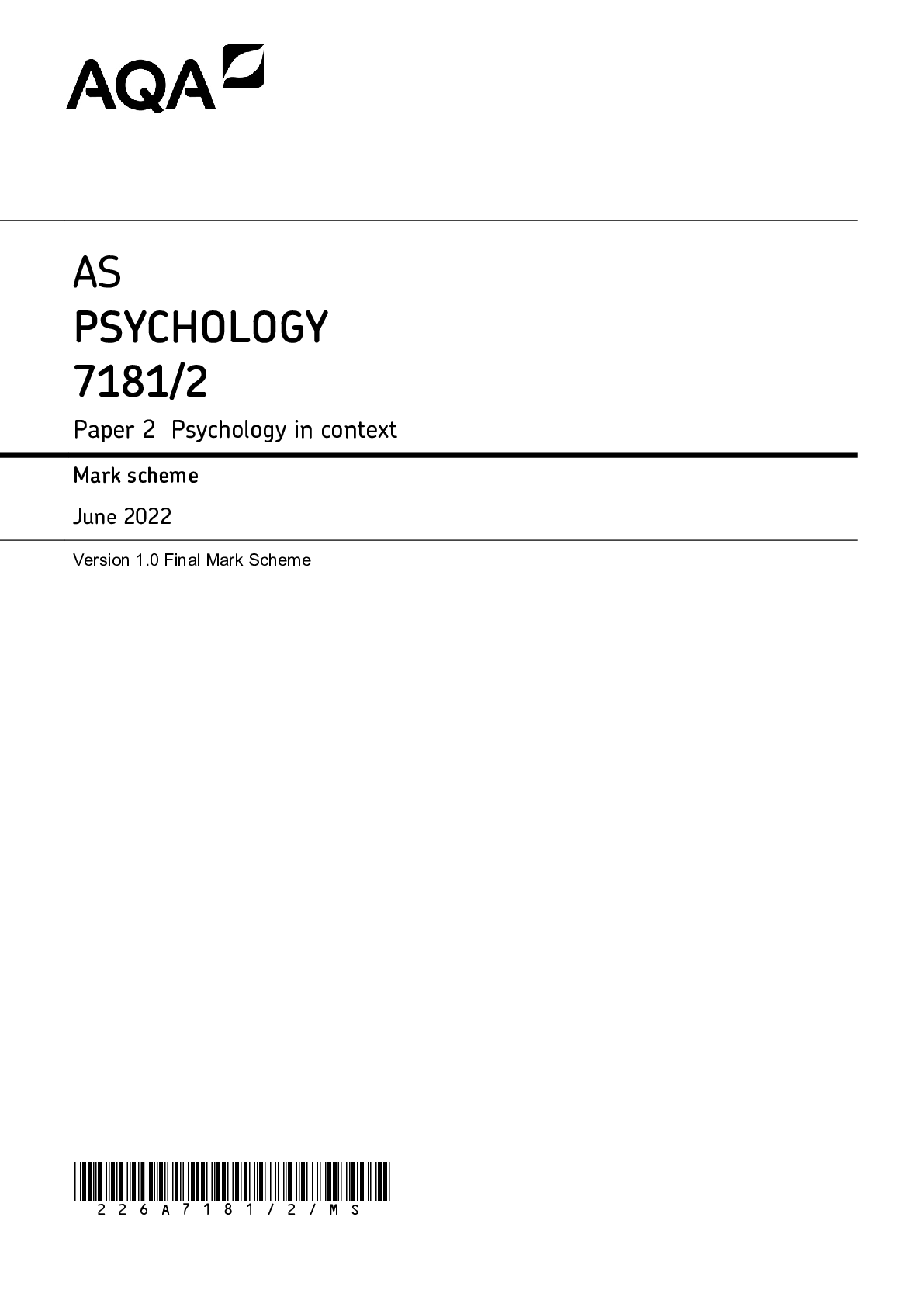
Buy this document to get the full access instantly
Instant Download Access after purchase
Buy NowInstant download
We Accept:

Reviews( 0 )
$8.00
Can't find what you want? Try our AI powered Search
Document information
Connected school, study & course
About the document
Uploaded On
Apr 01, 2023
Number of pages
18
Written in
All
Additional information
This document has been written for:
Uploaded
Apr 01, 2023
Downloads
0
Views
151

